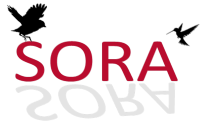New Breeding Records for California
New Breeding Records for California
Early last spring the services of Mr. Adriaan van Rossem were engaged by my brother and myself for a collecting trip which was to start from Los Angeles, going northerly through Los Angeles County to the Tejon Pass, take in some of the Buena Vista Lake country, then cross the Valley Past Bakersfield toward the more northeastern part of Kern County, to the South Fork of Kern River. The writer hoped to join the expedition but was compelled by developments to abandon the idea, to his great regret. Tejon Pass was one of the halting Places on the itinerary, and there a small number of Gallinago delicata were found breeding, making the first nesting record in southern California, or for any part of the state south of the extreme northern portion.
Mr. van Rossem's notes regarding this find are as follows: (Near Gorman, Tejon Pass, Los Angeles County, California, April 24, 1914) "Wilson's Snipe are fairly common. About a dozen in all were seen. While walking toward one of the Redwing's nests I kicked against a small tussock of grass and flushed a snipe which merely fluttered a few feet and stood watching me. A glance downward revealed the nest, and the bird was promptly 'auxed' for positive identification." This bird is now number 7636, and the set number 4269/4-14, collection of J. & J. W. Mailliard. Incubation was so far advanced as to necessitate drilling out a very large hole, cutting the embryo into small bits with scissors and removing the pieces with forceps. In the center of the bunch of grass above referred to, which was about one foot in diameter and two in height, in a swampy area, the nest was situated, it being "simply a few fine grasses, probably pulled from the stems directly beside the nest, as several bare stalks were noticed."
Other individuals, according to van Rossem's notes, showed indications of anxiety regarding the spots from which they were flushed, and, as no more nests were found, doubtless had young ones hidden nearby.
Another record is that of the Dwarf Cowbird (Molothrus a. obscurus) near Buena Vista Lake, where the nest of a Western Gnatcatcher (Polioptila c. obscura) was found containing three of the owner's eggs and one of the Dwarf Cowbird, the contrast in size between the two varieties being very marked. This set was taken on May 12, 1914, and 1s now number 4273/3-l-14, collection of J. & J. W. M.
JOSEPH MAILLIARD
San Francisco, California

